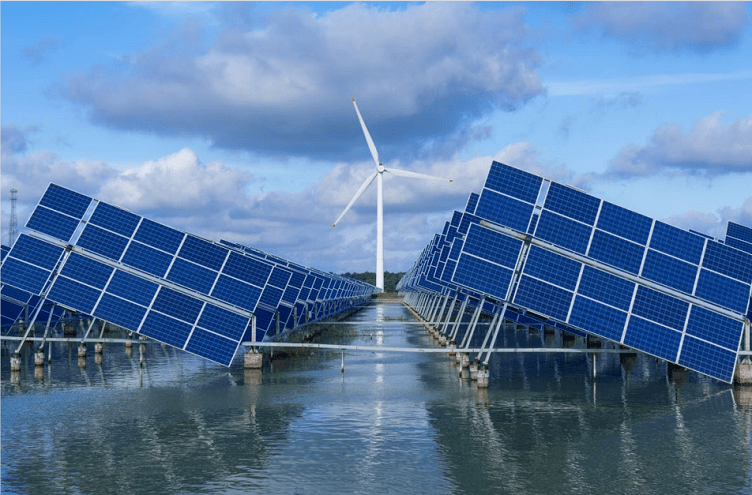
China is on track to nearly double wind and solar capacity by 2025, meeting its 2030 target five years early
Global Energy Monitor
| China saw a rapid increase in electricity generation and renewable power capacity in the first five months of 2023. |
China’s electricity output grew again, by 3.9% year-on-year in the first five months of 2023, state central planner the National Development and Reform Commission (NDRC) announced. A key driver was demand from primary industry, which grew by 11.6%, it said. In a post on WeChat, consultancy Guotai Junan Securities Research said that thermal power generation – mainly coal – increased by 6.2%. This was despite wind, solar and nuclear growth of 18.4%, 5.7% and 5.0%, respectively, it noted, with hydropower down 19.2% compared to the same period last year. The post also pointed to record heat as a factor driving electricity demand.
China’s drive to reform its power sector began in 2002, with renewed efforts launched in 2015. These reforms are “perhaps the most overlooked” of China’s climate policies.
Growing capacity for low-carbon electricity sources, which topped 50% of China’s total this year is one main task set by the government, says Chinese financial outlet Yicai.
Carbon Brief

Electricity generating capacity increased by 10% in the first five months of the year to 2,670 gigawatts (GW), China Energy News reported, citing data from China’s National Energy Administration. This included 38% growth in solar capacity, reaching 450GW, while wind reached 380GW, up 13%, the outlet added. Camille Paillard, energy analyst at the International Energy Agency (IEA), told Carbon Brief the solar growth was “impressive”, but raised questions over whether the grid was ready to “accommodate these levels of variable renewable energy”. Power-sector reforms (see China Briefing 15 June) will be key to integrate more renewables, Paillard said.
China is on track to nearly double wind and solar capacity by 2025, meeting its 2030 target five years early, according to a just-released study from Global Energy Monitor. The research has been covered by BBC News, the Guardian, Bloomberg and Reuters. It highlighted China’s efforts to promote energy storage, demand management and hydrogen production, but said more was needed to integrate variable renewables and push out coal.

A Reuters comment by columnist John Kemp said China “leant hard on coal-fired power plants” to “make up for a shortfall in hydroelectric generation as a result of low rainfall across the south since the middle of 2022”. (On Twitter, the Centre for Research on Energy and Clean Air’s Lauri Myllyvirta noted that the hydro shortfall was not only due to low rainfall, with firms saving water for use during the summer peak season.) Earlier this month, online news site Sina China predicted “the main risk” in this summer’s peak period is “still concentrated in hydropower”. State media outlet People’s Daily said the world’s first gigawatt-scale “hydro-solar hybrid” plant – recently completed in Sichuan province with 1GW of solar and 3GW of hydro – would help secure summer electricity supply.
Source: China Briefing, 29 June 2023. https://www.carbonbrief.org/
China Briefing is a fortnightly email newsletter round-up of key information about climate and energy in China, produced by Carbon Brief.